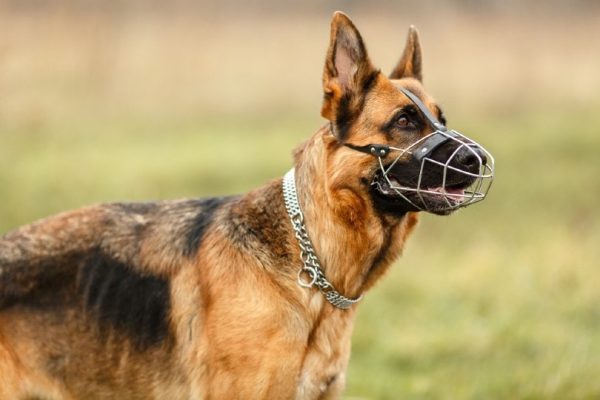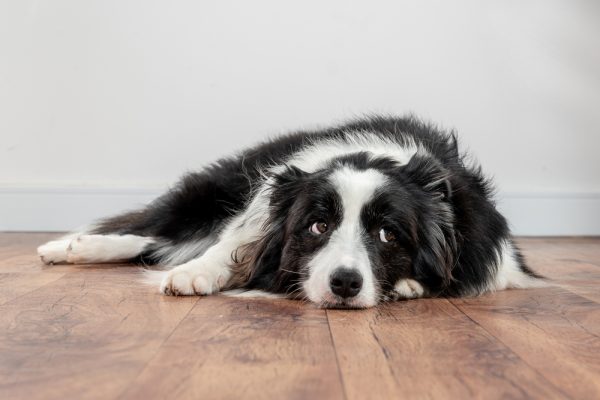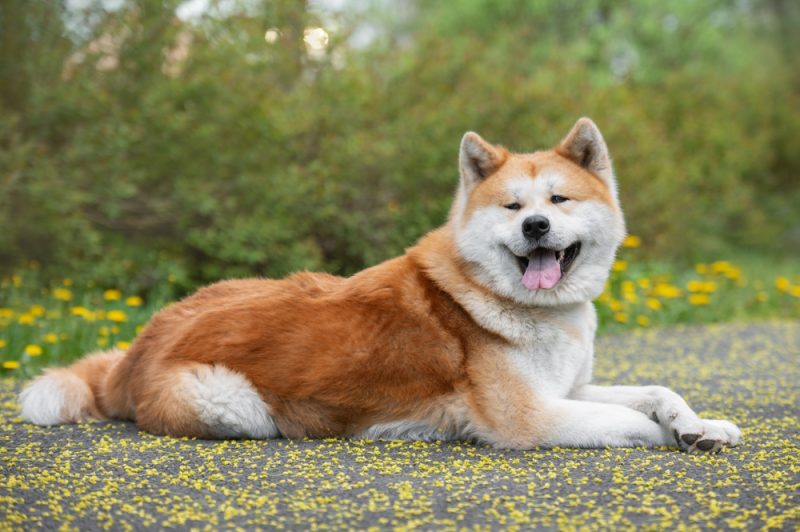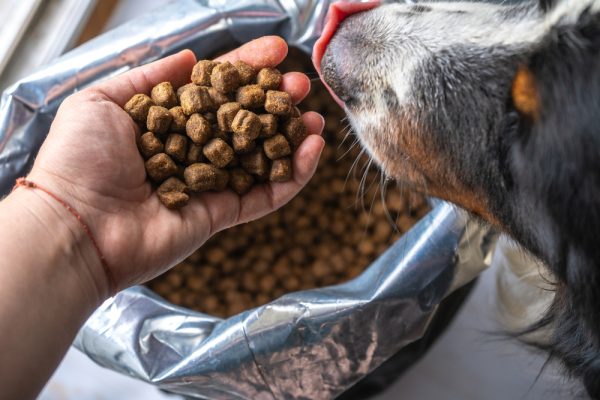As pet parents, we want to keep our dogs happy and comfortable, but if you have had a pup for a while, you likely know that they can be afraid of many different things, which can lead to high anxiety and misbehaving. If you have a dog that’s afraid of something specific or you want to prepare for when the day arrives, here, we list several common dog fears and what you can do about them.

The 10 Common Dog Fears
1. Loud Noises
Dogs often have a fear of loud noises, and they can get scared and start to bark or hide when they hear fireworks, thunderstorms, construction vehicles, or even loud music.
What Can You Do About It?
Unfortunately, loud noises can be difficult to predict, which can make it hard to do anything to help your pet. However, if you expect certain noises, like fireworks near the Fourth of July or trucks on garbage day, you can try putting on soft music or turning up the television to try to mask the sound. Some people also have had luck using desensitization training, in which you play a sound similar to the one that your dog is afraid of at increasingly loud volumes to help get them used to it.
2. Being Left Alone
Separation anxiety is a serious issue for many dogs, and it can lead to destructive behavior, excessive barking, and even attempts to escape.
What Can You Do About It?
Training your dog to stay home alone by gradually increasing the time that you stay away can be an effective way to reduce the amount of separation anxiety that your pet feels when you leave. Ensuring that they have plenty of toys, food, and water can also help.
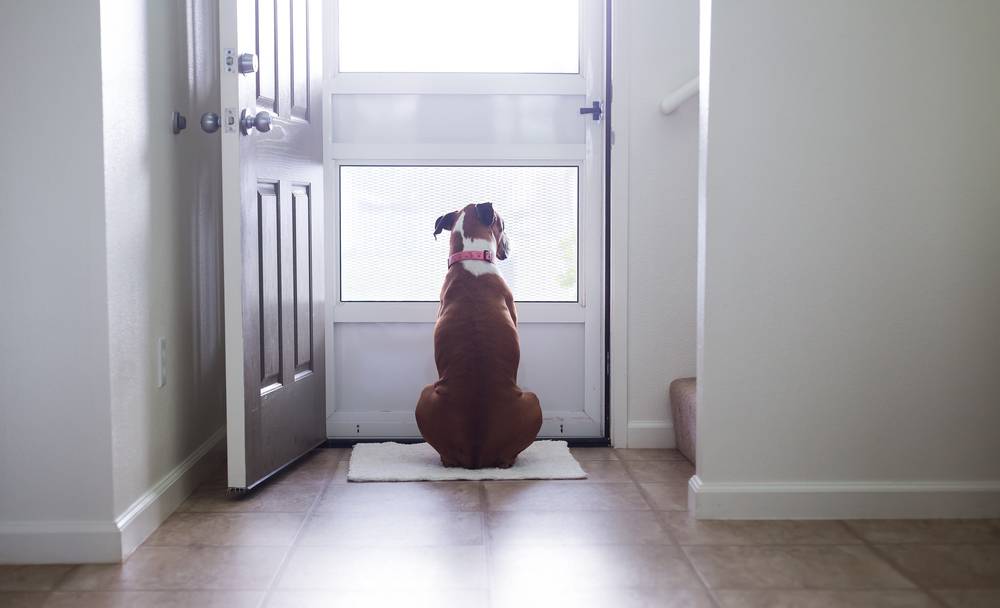
3. Strangers
Many dogs have a strong protective nature that can make them wary of strangers. This can cause your dog to start barking and even become aggressive if someone they don’t know gets too close.
What Can You Do About It?
The best way to help your dog feel more comfortable around strangers is to ensure that they spend as much time as possible meeting new people when they are still a puppy.
4. Other Animals
While not too common, dogs can sometimes be afraid of other animals, especially much larger dogs, coyotes, wolves, and bears.
What Can You Do About It?
You should socialize your dog when they are a puppy to help get used to other canines, though if your dog is especially tiny, you may still need to take defensive steps to keep them from accidentally becoming injured. If you think that there are any potentially dangerous wild animals in your area, you should keep your pet inside, even if your dog is taking a protective stance.
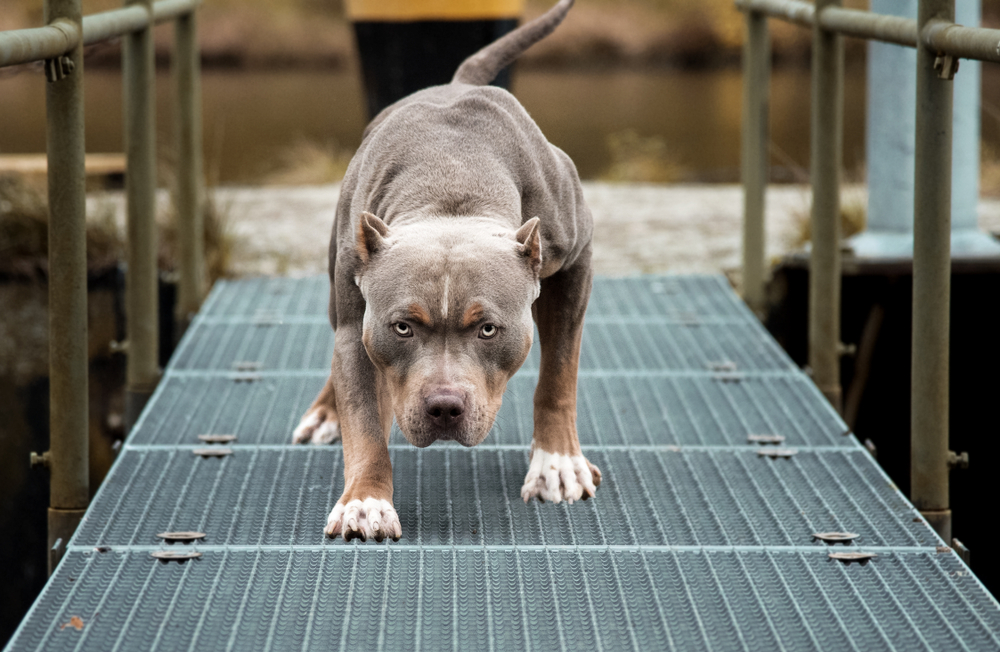
5. Vet Visits
Any pet owner will tell you that most dogs are afraid of the vet’s office. The unfamiliar environment, smells, and experiences there can make dogs anxious or fearful, and if they get shots or have a bad experience, they might be even more afraid next time.
What Can You Do About It?
Try to create positive associations with vet clinics by stopping to say hello and allowing your pet to meet the staff without getting an examination. Ensure that there are plenty of treats to go around to help your dog have a good time. Consider using calming aids like pheromone sprays, anxiety vests, or calming treats before visits to help soothe your dog’s nerves, and bring your dog’s favorite blanket or toy to the vet to provide comfort and a sense of familiarity in the examination room.
Another great option is to take advantage of veterinarian telehealth services and talk to a vet from the comfort of your own home.
6. Car Rides
While many dogs enjoy going for a ride in the car, some dogs can be afraid to get in. They may associate going in the car with a negative experience like going to the vet, or the movement of the car might make them feel nauseated.
What Can You Do About It?
In some cases, you might be able to desensitize your pet to car rides, starting with short rides and gradually increasing their length as your pet gets comfortable. However, in other cases, you might need to find a new activity that you and your pet can enjoy.
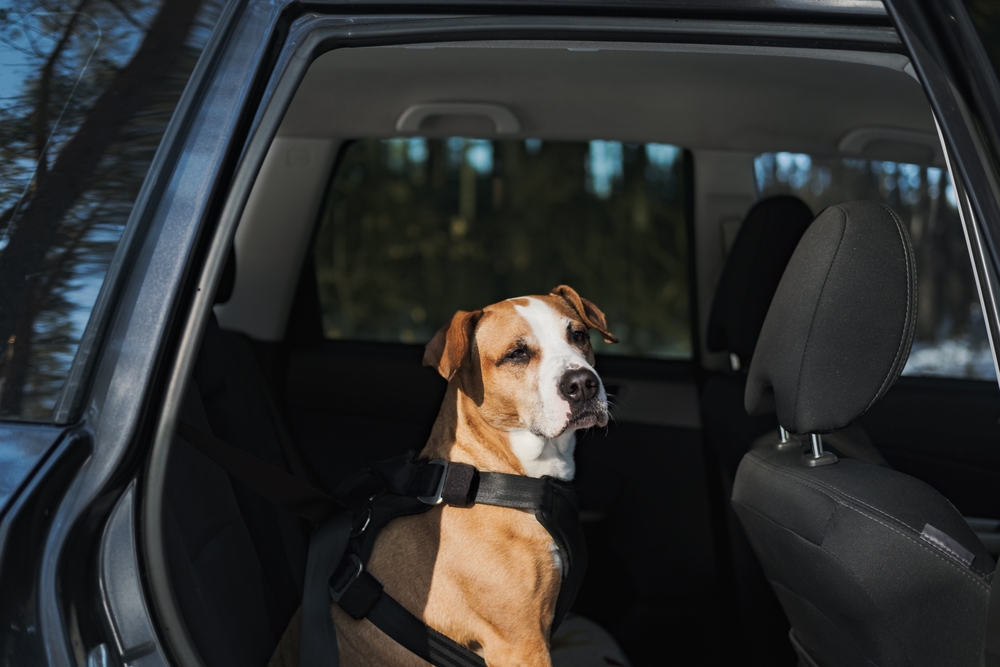
7. Specific Environments or Objects
Some dogs can become afraid of certain environments, like slippery floors, based on past experiences or a lack of experience. Objects, like vacuum cleaners and hats, might also scare a dog.
What Can You Do About It?
The first step is to identify what specifically triggers your dog’s fear and then use treats, praise, or play to create positive associations with the feared object or situation. Don’t force them to face their fears head-on. Instead, let them move at their own pace, and ensure that they have a safe place to retreat to if they feel overwhelmed. Stay calm and reassuring to help your dog feel secure.
8. Changes in Living Situation
Moving to a new home or changes in the household, like a new baby or pet, can cause stress and fear in dogs.
What Can You Do About It?
Try to maintain your dog’s regular feeding, walking, and playtime schedule as consistently as possible, as this can provide a sense of security. Keep their favorite toys handy, and let them explore the change at their pace, whether it be exploring a new home or saying hello to a baby. Dogs are sensitive to their owner’s emotions, so stay calm and positive while your pet adjusts to the changes.
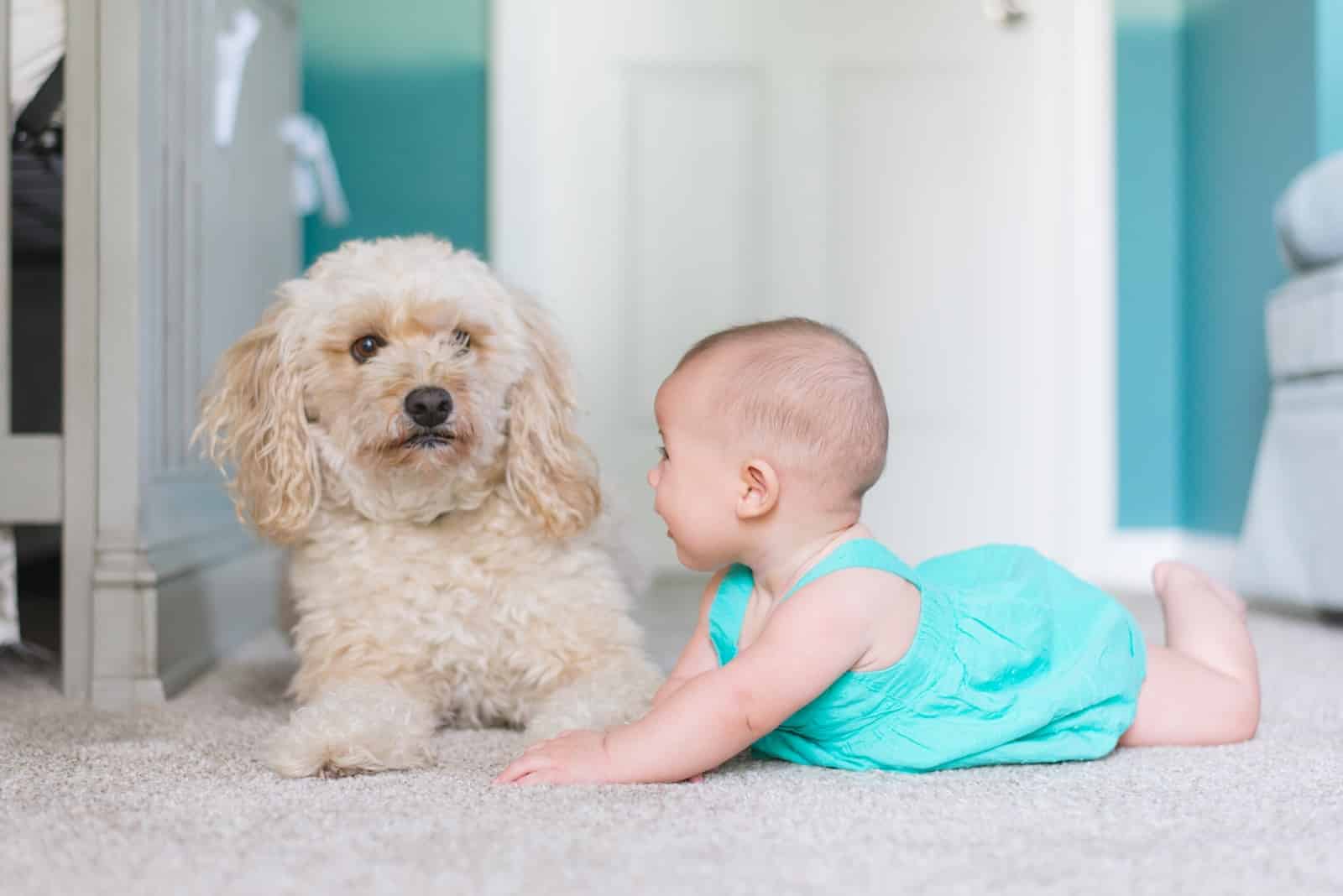
9. Handling
Some dogs are uncomfortable with being touched in certain ways or places, which can stem from a lack of socialization or past trauma.
What Can You Do About It?
Spend quality time with your dog without the immediate goal of handling them. Sit or lie down at their level to make yourself less intimidating, and let them approach you. Begin with gentle, minimal contact in areas that your dog is comfortable with, like a scratch behind the ears or a gentle pat on the back. Provide plenty of positive reinforcement in the form of treats and praise to help them associate what you are doing with a pleasant experience. Back off if they show signs of distress, and stay consistent to desensitize them slowly.
10. Costumes or Uniforms
Dogs might be afraid of people wearing hats, sunglasses, or uniforms due to their unfamiliar appearance, which makes them stand out from other people they see.
What Can You Do About It?
Getting your dog used to uniforms can be challenging, as it can be hard to acquire one to use for desensitization at home. However, if a uniformed person is in the area, you can try offering treats and praise to your dog to help turn it into a positive experience for your pet. Calming aids like pheromone diffusers, anxiety vests, or calming treats can also help your pet feel more comfortable, and you can try turning to an animal behaviorist for professional help.
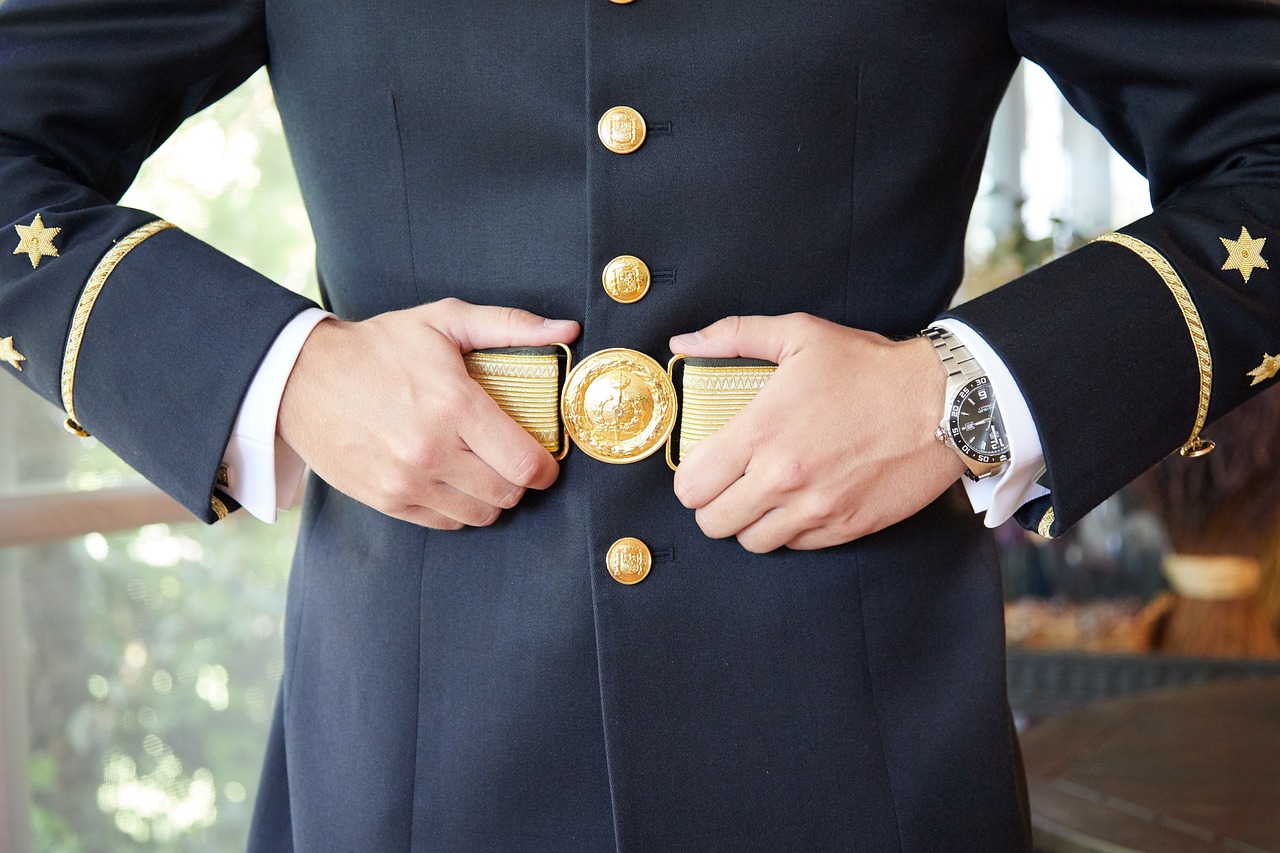

Summary
Many things can cause fear in your pet, including loud noises, being left alone, vet visits, and changes in the environment. Dealing with these issues can be challenging, but techniques like masking loud noises with softer noises, desensitization, plenty of positive reinforcement, and staying calm can help. If your dog seems especially troubled, talking with an animal behaviorist can get you advice specific to your pet.
Also see:
- Dog Communication & Body Language: 50+ Signs to Understand
- How to Train a Fearful Dog: Vet-Approved Tips
Featured Image Credit: Paul’s Lady, Shutterstock



